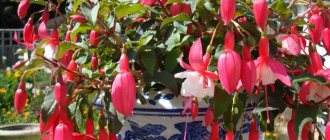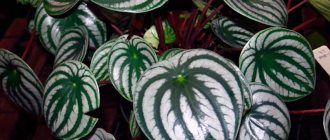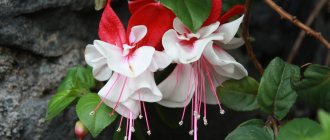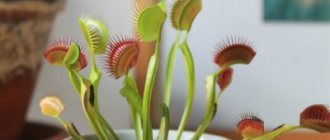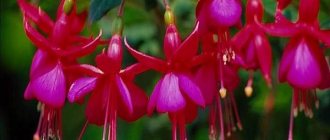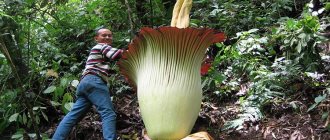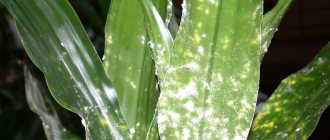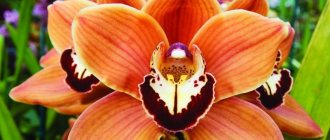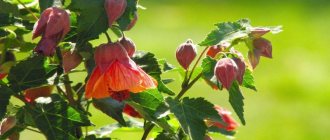Description of fuchsia
Depending on the species, the plant is a tree or a bush. The flexible branches are covered with oval-lanceolate opposite leaves of a green or slightly reddish hue. They do not exceed 5 cm, pointed at the ends and along the edge with teeth or smooth.
The flowers have an elongated tubular calyx and long stamens. After them, edible fruits appear.
Varieties
In indoor floriculture, hybrid fuchsia is usually bred. The group includes more than 2000 varieties with different shades and bud shapes. Depending on the type of bushes and method of growth, ampelous, bushy and semi-ampelic fuchsias are distinguished. But the division is conditional. The final appearance of the plant is determined by the conditions of its maintenance and the method of formation.
Bush fuchsias
Such plants are more common than others. The plant has erect stems up to 90 cm long. Typically, this fuchsia is pruned in the form of a standard tree. To do this, all lower branches are removed so that the crown is formed only in the upper part. In order for the plant to be spectacular, an ampelous variety is grafted onto the trunk.
Common varieties of bush fuchsia with photographs:
- Roches New Millennium is a small plant up to 40 cm tall. At the flowering stage, its branches are covered with medium-sized double buds with dark burgundy petals and light purple sepals. The shoots become woody as they grow. Therefore, the plant is grown in the form of a tree.
- Andromeda is a large bush with a dense crown. The leaf blades are dense, light green in color with red veins. The bush blooms profusely with simple small buds with dark red petals and lighter sepals. Perennials grow quickly. In southern regions with warm climates they are grown in open ground.
- Hannah is a plant with strong branches up to 60 cm long. The bushes grow quickly and bloom beautifully in the summer season. The flowers are simple or double with red, upturned sepals. Petals are cream colored with burgundy veins. The stems of this variety become woody very quickly. Therefore, it is usually grown in standard form.
What flowers to plant at the dacha
Ampelous fuchsias
These plants have long and flexible shoots that fall freely when planted in hanging pots. More often, hanging varieties are used to decorate balconies, terraces and verandas. The buds are medium or large in different colors. For splendor, several specimens are planted in one pot. Falling varieties are planted in partial shade so that they are not exposed to direct rays of the sun.
Common ampelous fuchsia varieties with photos:
- Golden Marinka has variegated leaves of a yellowish-green hue and produces many flowers. A plant with weak branching forms flexible hanging shoots up to 30 cm long. Small buds are simple or double. They have red petals and sepals.
- Issil is a plant with strong, fast-growing red branches. They become slightly lignified. Reddish veins appear on the bright green foliage. During lush flowering, large buds with beige sepals and soft pink petals are formed.
- First Love is a highly branching bush with a high growth rate. During flowering, long shoots densely cover large, long buds. They have snow-white sepals and soft purple petals.
Semi-ampel fuchsias
At the beginning of development, plants do not differ from bush forms. But during flowering, their shoots bend toward the soil under the weight of the buds. To prevent branches from breaking off, supports are placed under them. In many ways, the type of semi-ampel varieties is influenced by the method of formation. Some of them are grown as standard trees.
Common semi-ampeled varieties of indoor fuchsia flowers with photos:
- Fairy is a medium-sized plant with flexible branches up to 35 cm long. Flowering begins early. The branches are densely covered with double buds with long beige sepals and lilac petals. Its shoots gradually become woody. Therefore, the variety is often grown in the form of a standard tree.
- Golden Monica has beautiful yellowish leaves covered with red veins. The buds are small with pinkish sepals and lilac petals. A plant of small height with branching, gradually woody shoots. When placed in the shade, the foliage takes on a green tint.
- La Fiesta is a medium-sized bush with strong branches up to 45 cm in size. Red veins appear on the dark foliage. Blooms profusely with long flowers with light sepals and burgundy-red petals.
Types and varieties of fuchsia
Fuchsias can be grown as ampelous, bush plants, or formed into a pyramidal or standard tree.
Varieties can bloom in different seasons of the year. As a rule, almost all varieties have edible fruits (berries), but in room conditions they are difficult to ripen; you must wait until they turn black before using them for food.
Bush
| View | Description | Leaves | Flowers, their blooming period |
| Three-leaved | Size 60 cm. It grows in breadth, so it is good to place it in a hanging container. Large berries (5 cm). | Ovoid. 8 cm long and red in color, the back is greener and the underside is brown. | A large number of bell-shaped species, connected by fiery sepals into inflorescences. May - October. |
| Waist | Height - 50 cm. The fruits have a delicate taste. | Velvety dark green with hints of burgundy. | Bright orange medium. Spring - autumn. It can be extended throughout the winter by providing (temperature +25 °C) and lighting for at least 12 hours. |
| Magellan | Reaches 3 m. Sweet, tart. | Small, pointed (up to 4 cm). | Tubular from red to white colors. Spring - autumn. |
| Sparkling | Size 2 m. The fruits are edible. | Large serrated. | Scarlet. Summer. |
| Shiny (shining) | Height from 40 cm to 1 m. The berry is edible, rich in vitamins. | Large oval, green with a purple tint. | Raspberry-purple. April - November. |
| Graceful | Up to 1 m. Similar to Magellan. | Elongated oval (up to 5 cm). | Voluminous, bright pink, maybe with a purple center, sitting on small stalks. Spring - late autumn. |
| Splendence | Multileaf. The fruits are larger than other species (5 cm) with a tart lemon flavor. | Simple oval-lanceolate. | It looks like a long red pipe with light green petals at the ends. Whole year. |
| Bolivian | Beautiful, spectacular. Grows up to 1 m. The berries have a slight narcotic effect. Light lemon and pepper flavor. | Large velvety. | Collected in brushes, red and white, large. March, April. |
| Bright red | Reaches 1-1.2 m. The fruits are difficult to grow at home. | Lanceolate (3-5 cm). | The tubular sepals are red, the petals are purple. Beginning of April - end of October. |
| Thin | Grows up to 3 m. Narrow flowing reddish branches. Can be trimmed to guide its growth in width. | With a burgundy tint. | Numerous violet-purple. Collected in brushes. July - September. |
| Thyroid | Height - 3 m. The fruit is rich in vitamins. | Oblong-oval up to 7 cm. | White, red with a purple core. Mid-summer - early autumn. |
| Recumbent | 40 cm-1 m. Thin creeping shoots. The difference is diversity. Light red berry. | Round or heart-shaped. | Yellow, growing upward. April - November. |
Other beautiful varieties with double and semi-double flowers:
- Alisson Bell (violet-red);
- Anabelle (white);
- Ballerina (scarlet in the middle of a light pink skirt);
- Henriette Ernst (sepals - deep pink, petals - soft lilac).
Ampelous types:
- Blue angel (terry, white with lilac);
- Hollies Beauty (purple-blue);
- Imperial Crown (scarlet);
- Prince of Peace (white with red center).
Origin and description
Fuchsia (Fuchsia) is a representative of perennial plants from the fireweed family. More than 90 species of this bright flower are known. Its homeland is South and Central America, and as a perennial evergreen shrub, the crop is found in New Zealand.
Fuchsia grows ideally in foggy conditions, in a slightly shaded area. In addition, the flower needs coolness and a high level of humidity.
Fuchsia hybrids are grown in pots. In its natural habitat, the plant has flexible shoots that are well covered with leaves. They are emerald, less often found with a red tint. The shape of the leaves is oval, and the arrangement is opposite. The leaves have small teeth along the edges, where they become slightly pointed.
The shrub blooms profusely, which attracts attention because the flowers are often compared to small lanterns hanging down. They are formed by a sepal (its length exceeds the petals) and a corolla, the ends of which are bent in opposite directions. The stamens are long, so they can be seen from the flower. Fuchsia has different shades: purple, red, orange, white, etc.
Growing and caring for fuchsia at home
The flower goes through an active growing season in April - August. December - January is his rest period.
| Factor | Spring | Summer | Autumn | Winter |
| Location | Windows on the west and east sides (lots of diffused light). | |||
| Lighting | Can be placed in open space. | At least 12 hours. | Illuminated when there is not enough sun. | |
| Temperature | +18…+24 °C. | +5…+10 °C. | ||
| Humidity | Spray with warm filtered water every day in the evening and morning. | 1 time in 3 days. | No need. | |
| Watering | When the top layer of soil dries out. | Reduce, but do not allow the soil to dry out completely. | No more than 2 times a month. | |
| Top dressing | 2 times a month with mineral fertilizers for flowering plants. | Do not use. | ||
The main mistakes in growing fuchsias
Experienced flower growers know the rules for growing and caring for indoor perennials. But novice fuchsia lovers make the following mistakes:
- the pot is left in a hot room;
- do not provide the crop with the necessary amount of light;
- placed in such a way that dangerous rays of the sun fall on it - this harms the entire plant: the roots dry out, deteriorate, flowers fall off, growth slows down or stops altogether;
- they abuse nitrogen fertilizers - the shoots grow quickly, but the root system and buds almost do not develop.
Another common mistake is incorrectly selected containers. If the pot is cramped, then the crop will not bloom. In spring, fuchsia may also not enter the growing season if planting and care were done incorrectly. This is especially true in the autumn-winter period. In winter, the temperature in the room where the flower is located should be 8-10℃ with a plus sign. If this indicator is higher, the culture will begin unplanned growth.
The growing season is also affected by the timing of pruning and pinching. Weak, diseased and broken branches should be removed in the spring during the period of active growth before flowering. This action is repeated again in the fall.
Fuchsia propagation rules
There are two methods for obtaining new fuchsias: seed and cuttings.
Seeds
This is a rather labor-intensive process, which, as a rule, does not preserve the individuality of the mother flower. Seeds are sown in early spring:
- Since they are very small, they are mixed with sand and scattered on the surface of the soil.
- Sprinkle with a small amount of substrate.
- Cover with film or glass.
- Maintain temperature +15…+18 °C. Water into a tray.
- Sprouts appear within a month.
- When two sheets are formed, they are picked.
Vegetative
Old or young shoots (about 10 cm) are used as cuttings, which are cut at the end of winter:
- The lower leaves are removed. The cuttings are placed in a glass with water, liquid substrate or sand.
- Create a mini-greenhouse using a plastic container or bag.
- After 2 weeks, when roots appear, the cuttings are replanted.
How to plant fuchsia sprouts
The sprouts are planted in small containers, no more than 9 cm in diameter. Drainage is required. The pot is completely filled with earth so that there are no voids. To do this, it is shaken and tapped, but not compacted by hand; the soil must be porous.
Transplantation is performed in the spring once a year. An adult bush is shortened by 1/3, the roots are trimmed (excluding hanging varieties).
The substrate used is slightly acidic, there are several options:
- sand, peat, sheet soil (1:2:3);
- sand, greenhouse, clay-turf soil, peat chips (1: 2: 3: 0.2);
- ready-made mixture for flowering plants.
Further step by step process:
- A ceramic pot is used to protect the root system from the summer heat, about 4 cm larger than the previous one.
- Pour drainage onto 1/5 of the new container (expanded clay, pebbles) to protect the plant from rotting.
- Sprinkle with substrate.
- Using the transfer method, the fuchsia is removed from the old container, without shaking off the soil, and placed in a new one. The voids are filled.
- Spray and water until moisture appears in the stand. After a while, excess liquid is removed.
- No feeding for 30 days.
- After another 60 days, flowering is expected.
Methods for pruning fuchsia
Fuchsia is pinched to stimulate good flowering, the appearance of a large number of young shoots, as well as to form the plant into a ball, bush, or bonsai tree.
It is pruned twice a year: after flowering in October and during the dormant period in January.
Autumn
Remove stems that have bloomed. Dormant buds are left 2 cm below the cut.
Winter
Thin shoots are removed, woody old ones are pruned, since flowers are formed mainly on young shoots.
Bonsai
When forming a small tree, one shoot or several are left that can be twisted. The top is pinched to create a lush crown.
Bush
If you shorten the flower to the very stump, it will remain dormant longer, bloom late, but at the same time it will produce many young shoots and the plant will take on the appearance of an extensive shrub.
Care
Fuchsia is a houseplant with a hybrid form; the stems can be straight or pyramid-shaped. There are ampelous varieties: spreading, hanging, climbing, bush and tree-shaped. The flowering period is long and abundant. Proper cultivation of a flower and caring for it at home will ensure full development and growth.
Location
Pots with culture must be placed in the eastern or northern parts of the room.
Attention!
Here it is also necessary to protect the plant from UV rays. You can use blinds or curtains for this.
There is a high probability that in the spring, flowers located on the north side may not have enough daylight hours, so you will have to turn on fluorescent lamps.
On a southern windowsill in summer, the crop will suffer from high temperatures. Therefore, the pot should be put away in the shade on the balcony or in the garden. During the flowering period of fuchsia, you cannot change the location of the flowerpot, or turn it in different directions towards the light. The culture may shed its buds.
Problems when growing fuchsia, diseases and pests
With insufficient care and non-compliance with the rules of agricultural technology, the plant suffers from various diseases.
| Manifestation | Cause | Corrective measures |
| Curling of leaves. | Fever. | They shade. |
| Falling leaves. | Lack of lighting, low air humidity. | Spray in hot weather. |
| Dropping buds. | Excessive or incomplete watering, lack of light and nutrition. Plant disturbance during the growing season. | Provide the correct watering regime. Do not disturb when buds are pouring. Feed correctly. |
| Flowering is short and small. | The rest period took place in too warm conditions. | Provides coolness during winter. |
| Browning of foliage. | Overmoistening at low temperatures. | Reduce watering. |
| Root rot. | Excessive watering and spraying, stagnation in the pan. | Treated with fungicides (Fitosporin). Reduce watering |
| Covering leaves with white cobwebs. | Spider mite. | Spray with acaricide (Fitoverm) 3-4 times every 7 days. |
| The appearance of white insects. | Whitefly. | Insecticides are used (Aktara, Fufanon). 6-7 times every 3 days. |
Pests and diseases
Fuchsia ampelous variety Golden Marinka (Golden Marinka)
Succulent shoots and leaves are often affected by whiteflies, which, together with the larvae, suck out the juice and are a carrier of viral infections. Vague yellowish spots appear on the leaf surface, the leaves themselves curl into tubes and later fall off. The insect does not like dry air, so first of all you should stop spraying.
Spider mite infestation, another common pest, is noticeable as whitish dots or the appearance of fine webbing. The leaves dry out, the plant looks depressed and weakens.
If pest damage is suspected, plants are inspected by collecting or washing off whitefly eggs and larvae and completely removing mite-affected leaves. Spraying with a soap solution, sulfur suspension or Fitoverm and Judo preparations helps against ticks. In the fight against whiteflies, the same means are used, in addition, you can put a cloth moistened with an insecticidal preparation (Aktellik, Decis, Aktara) on the ground and cover the bush with a bag for a day. Then the bag is removed and the room is ventilated.
A humid and warm environment promotes the development of gray mold, which is characterized by the appearance of dark spots of mold on shoots and leaves that later die. To combat the disease, reduce humidity, remove diseased parts of the plant, and apply fungicide treatment, of which Fundazol is effective.
The appearance of small red-brown tubercles on the underside of the leaf indicates a very dangerous disease - rust. The affected parts, or better yet the entire diseased plant, are destroyed.
Whiteflies can transmit the mosaic virus, which in fuchsia causes the appearance of light mosaic spots on the leaves, their deformation, curling and falling. Treatment for mosaic has not been developed; the plant should be destroyed.
To avoid the introduction of pests and viruses, all purchased seedlings and cuttings are carefully inspected and placed in quarantine for two weeks.
